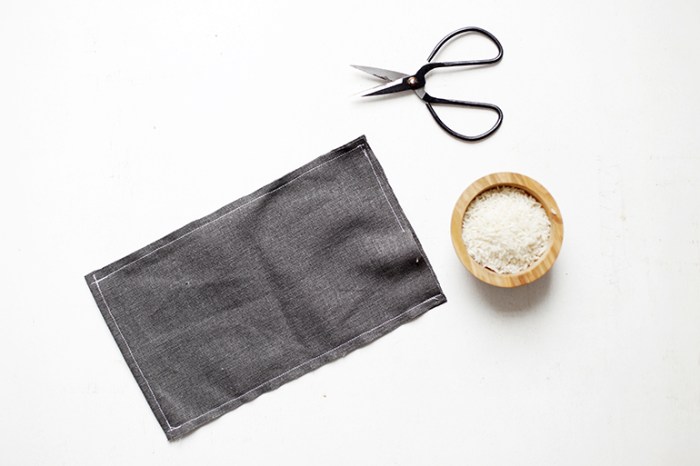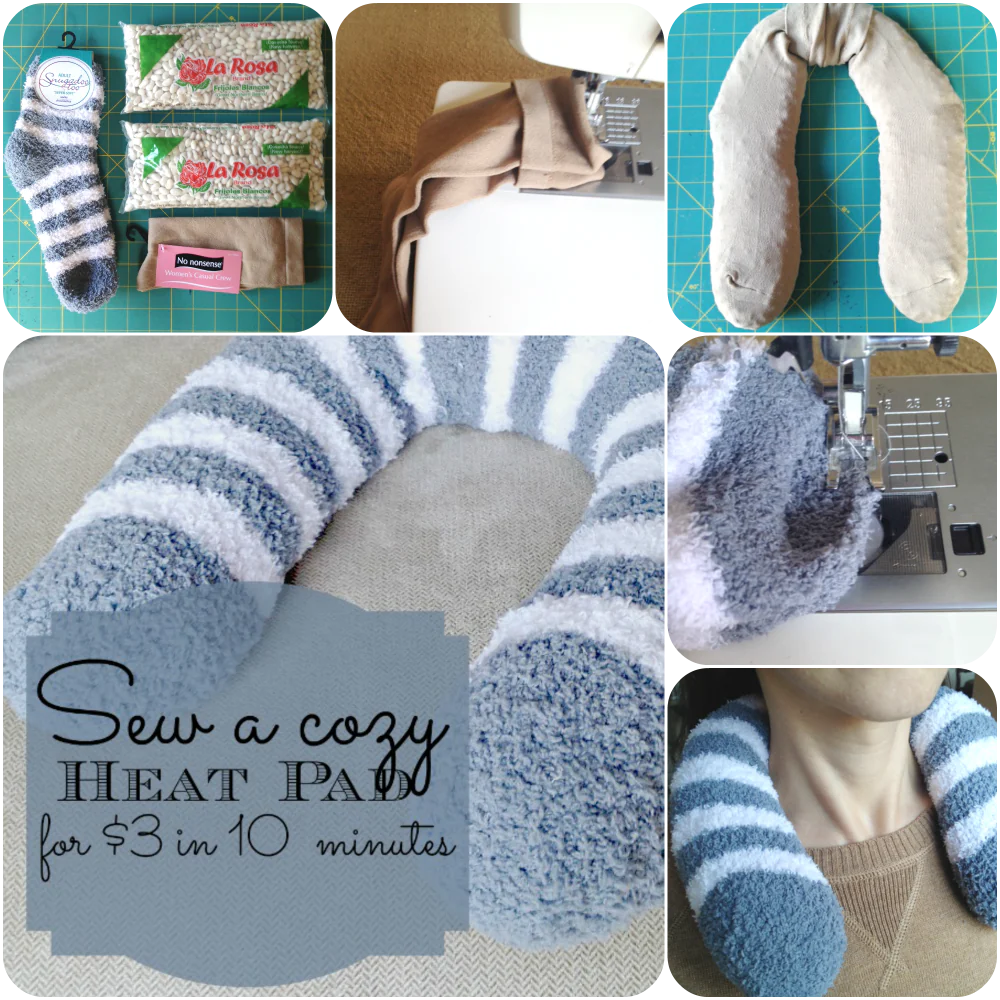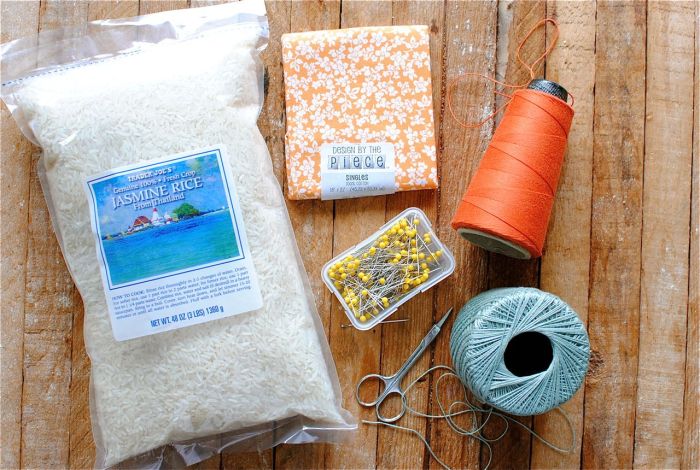DIY heating pads offer a comforting and affordable way to soothe aches and pains, providing warmth and relaxation right in your own home. Whether you’re dealing with muscle soreness, menstrual cramps, or simply chilly hands and feet, these homemade solutions can be a welcome relief. From simple rice-filled pouches to more elaborate designs, the possibilities for customization are endless, allowing you to create a heating pad that perfectly meets your individual needs.
Creating your own heating pad is a rewarding experience, allowing you to personalize your therapy and potentially save money. This guide will walk you through the process of selecting materials, designing your heating pad, and ensuring safe and effective use.
DIY Heating Pad Designs

DIY heating pads offer a cost-effective and customizable way to soothe aches and pains. They can be made with readily available materials and tailored to your specific needs. Let’s explore some popular DIY heating pad designs.
Microwave-Safe Heating Pad Designs, Diy heating pads
Microwave-safe heating pads are a quick and easy option for targeted heat therapy. They can be made with various materials, each offering its own benefits.
- Rice-Filled Heating Pad: This classic design uses uncooked rice as the heating element. Rice absorbs heat efficiently and retains it well, providing long-lasting warmth. To make a rice-filled heating pad, you’ll need a fabric pouch, such as a sock or a pillowcase, and uncooked rice. Fill the pouch with rice, leaving some room for expansion, and sew or tie the opening closed.
- Dry Beans Heating Pad: Dry beans, like rice, are excellent heat absorbers. They offer a slightly coarser texture compared to rice, providing a gentle massage-like sensation. The process for creating a dry bean heating pad is similar to that of a rice-filled pad.
- Wheat Berry Heating Pad: Wheat berries are known for their ability to retain heat and moisture, making them suitable for creating a moist heating pad. You can use a fabric pouch or a small pillowcase to create a wheat berry heating pad.
- Herbal Heating Pad: For aromatherapy benefits, you can incorporate dried herbs into your heating pad. Lavender, chamomile, and rosemary are known for their soothing properties. Combine your chosen herbs with rice, beans, or wheat berries to create a fragrant heating pad.
Reusable Sock Heating Pad
Reusable sock heating pads are a simple and versatile option for providing warmth. They can be filled with various materials, depending on your preference and desired texture.
- Choose a sock: Select a clean, sturdy sock made from natural fibers like cotton or wool. Avoid socks with seams that might irritate your skin.
- Choose a filling material: Common filling materials include rice, dry beans, wheat berries, flaxseeds, or a combination of these.
- Fill the sock: Pour the chosen filling material into the sock, leaving some room for expansion.
- Secure the opening: Tie the opening of the sock tightly with a string or a rubber band to prevent the filling from spilling.
- Heat the pad: You can heat the sock heating pad in the microwave for a short period, typically 30 to 60 seconds, depending on the filling material and microwave wattage. Always check the temperature before applying the pad to your skin.
Safety Precautions: Diy Heating Pads

DIY heating pads can be a great way to relieve pain and muscle tension, but it is important to use them safely to prevent burns and other injuries. Here are some important safety precautions to keep in mind when using your DIY heating pad.
Preventing Burns
Always test the temperature of your DIY heating pad before applying it to your skin. It should be warm to the touch, but not hot. If it is too hot, allow it to cool down before using it. Never leave a DIY heating pad unattended on your skin, as it could cause burns.
- Use a timer to remind yourself to check the temperature of the heating pad and to remove it after a certain amount of time. This will help to prevent overheating and burns.
- Never use a heating pad on a child or someone who is unable to feel pain. These individuals are at a higher risk of burns.
- Do not use a heating pad on areas of your body that are already irritated or inflamed. This can worsen the irritation and cause pain.
Preventing Overheating
To prevent overheating, use a heating pad with a built-in thermostat or timer. This will help to regulate the temperature and prevent the pad from getting too hot.
- If your DIY heating pad does not have a thermostat or timer, you can use a separate timer to remind yourself to turn off the pad after a certain amount of time. This will help to prevent overheating.
- Never use a heating pad for longer than 20 minutes at a time. This will help to prevent overheating and burns.
- Allow the heating pad to cool down completely before storing it. This will help to prevent the pad from overheating and catching fire.
Storing and Handling DIY Heating Pads
Proper storage and handling can help extend the life of your DIY heating pad and ensure its safety.
- Store your DIY heating pad in a cool, dry place. Avoid storing it in direct sunlight or in humid environments.
- When not in use, unplug the heating pad from the power source. This will help to prevent overheating and fire hazards.
- Do not fold or bend the heating pad. This can damage the heating element and shorten the life of the pad.
- If the heating pad is damaged, do not use it. Replace it with a new one.
DIY Heating Pad Alternatives

Sometimes, a DIY heating pad might not be the most practical or convenient option. Fortunately, there are several readily available alternatives that offer similar benefits.
Hot Water Bottles
Hot water bottles are a classic and versatile heat therapy option. They are inexpensive, readily available, and can be used to target specific areas of the body.
- Advantages: Hot water bottles are generally safe and affordable, with a wide range of sizes and shapes available. They are also reusable, making them an environmentally friendly choice.
- Disadvantages: Hot water bottles can be bulky and require time to heat up. Additionally, they can leak if not handled carefully, posing a risk of burns.
- Safety Precautions: It is crucial to use hot water bottles with caution to prevent burns. Fill them with hot, but not boiling water, and avoid placing them directly on the skin. Ensure the bottle is free of leaks and cracks before use.
Electric Heating Pads
Electric heating pads are a convenient and effective way to provide localized heat therapy. They are available in various sizes and shapes, with adjustable temperature settings.
- Advantages: Electric heating pads are easy to use and offer adjustable heat levels for personalized comfort. They are also typically lightweight and portable.
- Disadvantages: Electric heating pads can be more expensive than other options and require an electrical outlet for operation. Additionally, they can pose a fire hazard if not used properly.
- Safety Precautions: Always follow the manufacturer’s instructions for safe use. Avoid using electric heating pads while sleeping, as they can overheat and cause burns. Never place them directly on the skin, and unplug them when not in use.
DIY heating pads are a versatile and cost-effective way to experience the benefits of heat therapy. With a little creativity and a few basic materials, you can create a customized heating pad that provides soothing warmth and comfort whenever you need it. So why not give it a try? The warmth and relaxation are just a few steps away.
DIY heating pads are a great way to soothe sore muscles or simply warm up on a chilly day. If you’re looking for a fun project that combines creativity and comfort, consider making a heating pad inspired by your favorite Disney character. You can find plenty of inspiration for DIY Disney outfits , and you can easily adapt those ideas to create a unique heating pad.
Whether it’s a Mickey Mouse-shaped pad or a Frozen-themed design, you can create a cozy and personalized heating pad that brings a touch of magic to your home.
